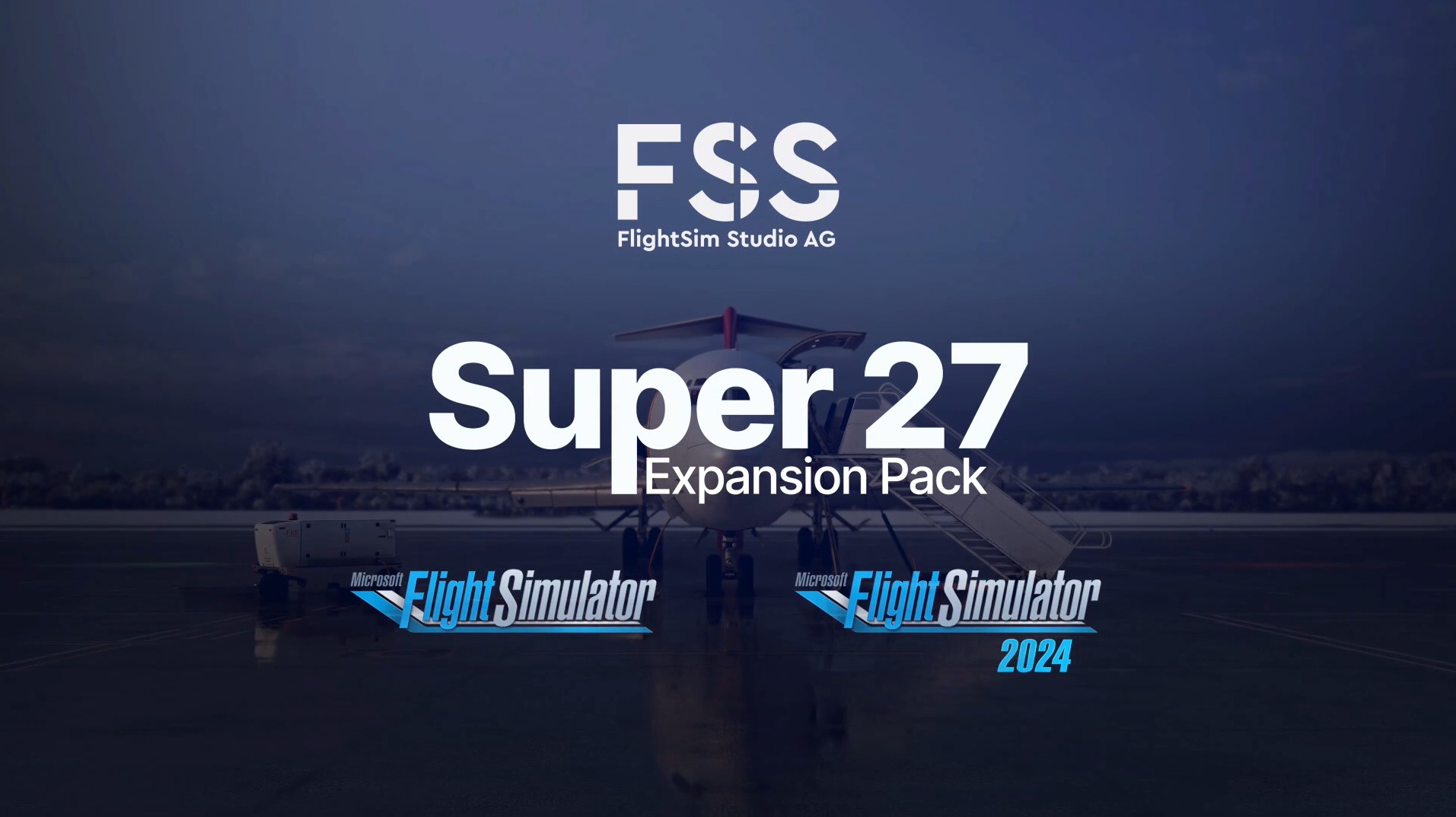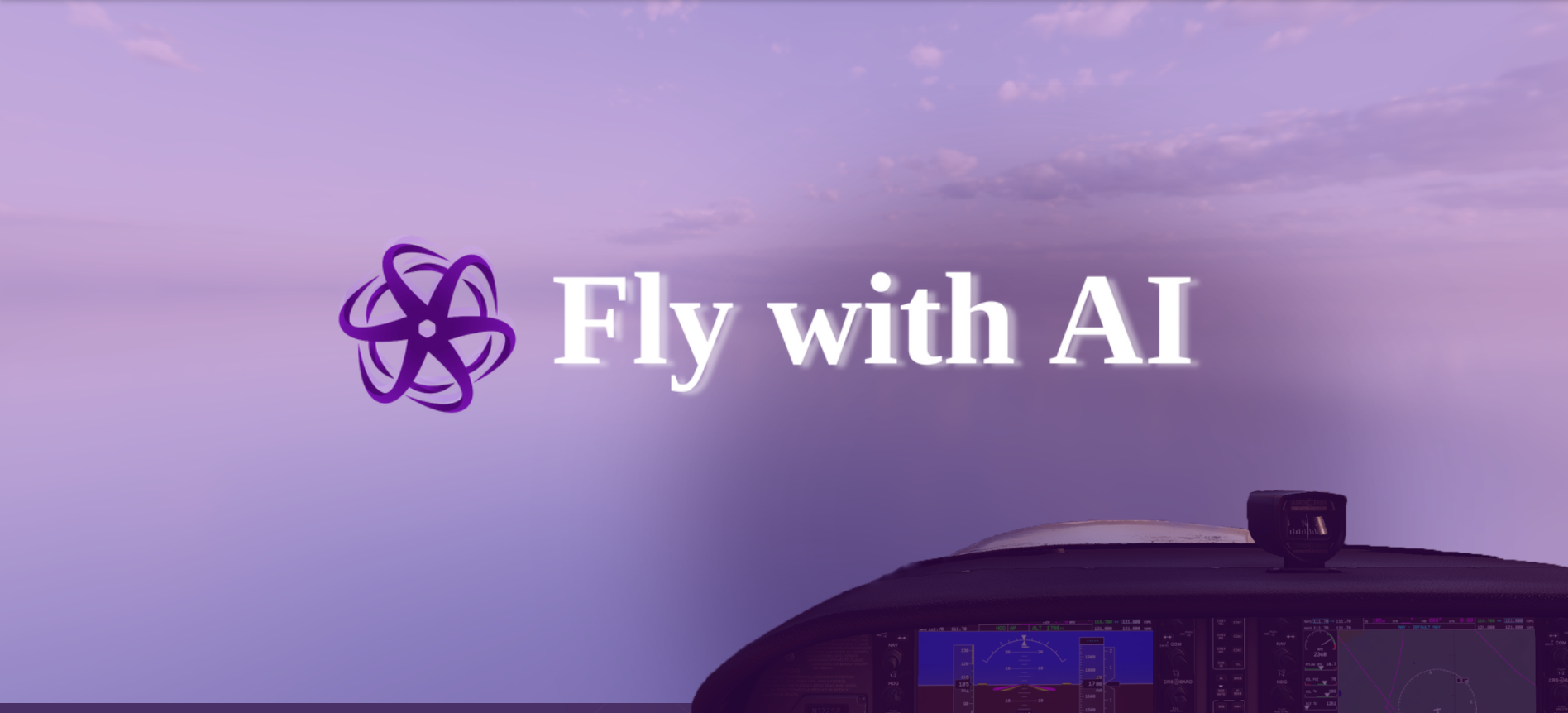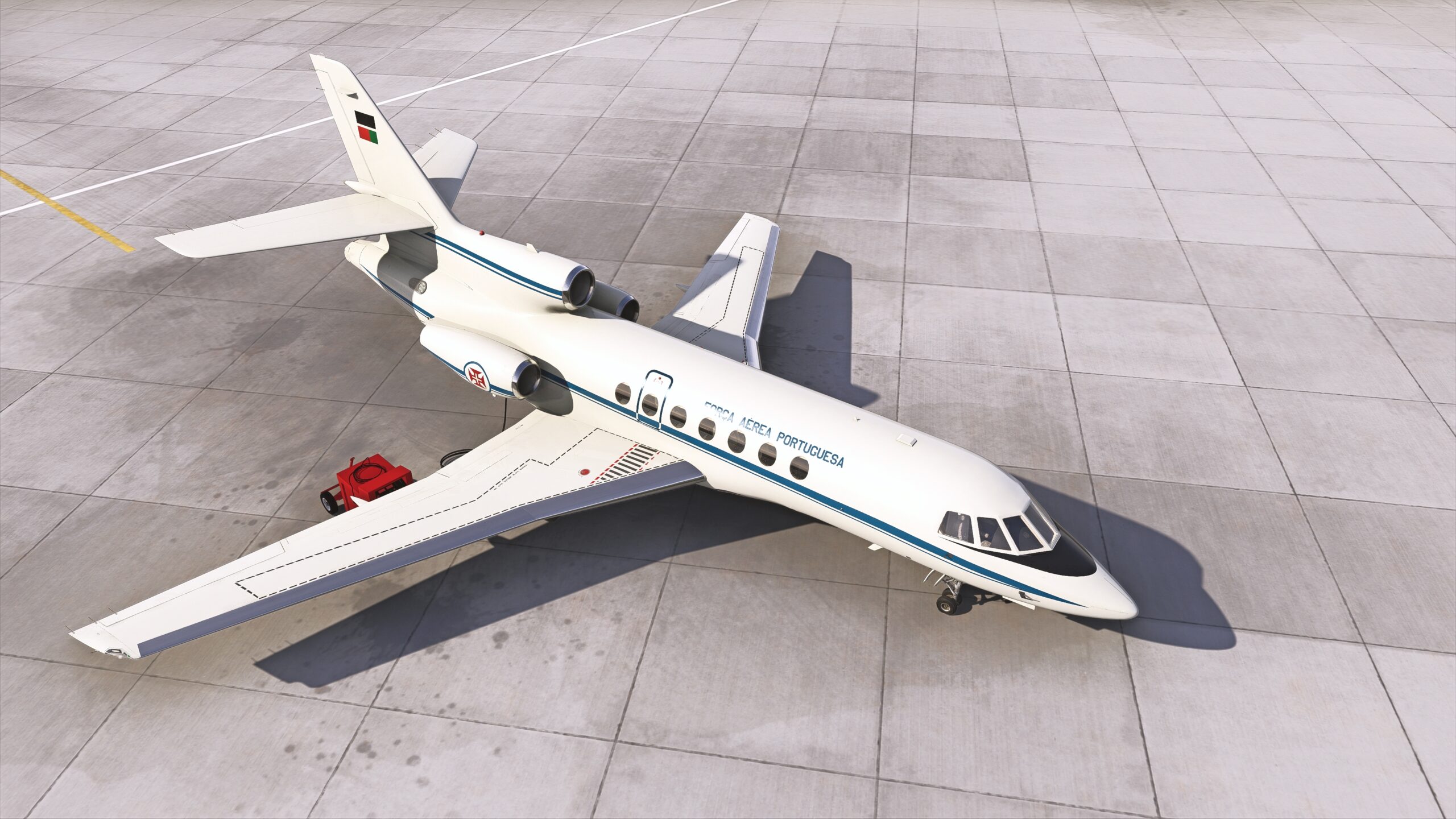Flight simulation is a wonderful hobby, and you could have already read about that in our previous article from last year. However, what does it actually take to step into this virtual world of planes and pilots? Let me show you my opinions on what it actually takes to be a virtual pilot.
Table of contents
Introduction
Virtual aviation and flight simulator is one of the best encounters of my life. It gave me a lot of ideas on how aeroplanes actually work, made a lot of new friends and I overcame my fear of flying because of it. Many of us started early. Personally, I started seven years ago, on the 17th of April 2016. I was twelve at the time and I just decided to get a flight simulator with no particular reason in mind.
I thought I would give it a maximum of forty hours and then forget it. Well, the very opposite ensued, and after thousands of hours of flying and learning about planes, here I am writing articles about virtual aviation. Thinking about it now in retrospect, this might even have had an impact on my future career.


You can easily get hooked up to this even without being an avid aviation fan, as I wasn’t. I really started sporadically and it changed me ever since.
So, what is flight simulation about anyway? Flying aeroplanes from point A to B watching how the world changes below your virtual sixty-tonne tube? Well yes, but actually no. If you want to be a bit more professional, there is a lot more to it than just launching your fighter at Mach 2 into the side of a mountain.
Flight simulation is all about learning, and believe me when I say that, you will have to learn a lot before you can even begin. You must understand how to plan your flight, start it, and keep it stable in the air. That, however, is only the tip of the iceberg.
Are you an aviation fan?
Being an aviation fan is a great start. This already puts you ahead of others who, like me, just sporadically started. You can concentrate more on what you want to learn and why. You know a thing or two about aircraft types and then you can start learning your favourite instead of fiddling around and finding the one that suits you the best.
In any way, even if you are not an aviation fan, if the feel for it is in you and you still don’t know, you’ll feel attached very quickly. Being an aviation enthusiast is a huge benefit, but it is not required to get into the hobby as you may discover the aviation enthusiast in yourself later.
Knowing about your personality
This is crucial on the starting grid. Flight simulation will really teach you some good patience, and trust me, you will need it during your study and even during flying. You cannot lose your temper, either on the network or personally during the early stages.
You also need to be a bit stubborn. You can’t be distracted by any external effects. If you think it’s far too difficult for you, but you still want to fly virtual planes, don’t push yourself, start slowly, and take your time. Nobody is pressuring you.
However, I do highly recommend that you need the ability to justify yourself and believe in the decision you made with flight simulators. Many people will definitely tell you why you’re doing that and that it’s a waste of time. You cannot listen to them. It is your personal thing, and no one can take it away from you. They have the ability to take it away from you if you allow them to.
Another aspect is that you need to push yourself constantly in the world of flight simulation. Once you feel like you know everything about virtual aviation, trust me, you don’t. And you have to be willing to learn and be patient with flight simulators.


Patience is especially important with simulator setup. If anything breaks, you need to be patient, it might take time and effort to actually fix your simulator in case it will keep crashing on you or any other issue you might encounter during your learning experience. Likewise, don’t be overconfident. This is going to create a lot of issues in your journey. Rushing to fly on an online network is never a good idea, and choosing the biggest and the most difficult aeroplane from the start is also a terrible way to start your flight simulator journey.
You also have to be curious like a three-year-old child and I mean that. You need to be willing to find out stuff, what is going on and why. This applies to both flying and working around the simulator as a platform. Google is definitely going to be a day-to-day friend of yours. This however will also reflect on real life and might help you a lot with any work you have to do.
How do I set it all up?
Once you finally decide whether you feel that flight simulation is for you, you need to start working around your computer setup. You need to know what you need and what will suit you the best in terms of both hardware and software. In this section, I am going through my personal opinions on what you need for different kinds of flying.
Hardware
Hardware is essential. Depending on the simulator you wish to fly, you need to choose a strong enough computer. However, the stronger, the better. Especially if you want to do any simulator upgrades eventually in the future.
Usually, even for Microsoft Flight Simulator on 1080p display, an RTX3060, Ryzen 5 of modern generations and 32 gigabytes of RAM should be just enough. However, if you are running a monitor with a much higher resolution, it would be better to invest in a much stronger graphics card. Personally, I highly recommend a combination of an AMD CPU with an Nvidia GPU.
You will also need a lot of hard drive space for all the add-ons and if you want to have more than one simulator installed, which, trust me, you will want to in the future. This hard drive space really needs to be on an SSD, that can hold a lot of data constantly, it needs to be fast and reliable. Classic disk drives are not sufficient for flight simulation anymore. From my experience, the classic 2TB HDD which I had on my computer before was full by the use of any flight simulator. Also, the loading times were long and stutters were present. Thus, I highly recommend investing in an SSD space. At least 2 terabytes.
For flying, not only a computer is essential. You need hardware that you can control your virtual aeroplane with. Getting to know all the various joysticks on the market might be overwhelming from the start. Usually, the entry-level ones tend to be good enough for casual flying. Regardless, don’t go under the €50 price point. You can get those joysticks on sale for around €30 from time to time.
Thrustmaster joysticks usually tend to do the job right and they are very reliable. Especially the Thrustmaster TCA with the throttle quadrant, I have had that joystick already for over three years and I have no issues with it. It’s precise, reliable and wonderful to handle any kind of aeroplane. And it gives you a wonderful immersion when you decide to fly the Airbus A3XX family. It’s also modifiable and suits both left and right-handed people well. You can also purchase another quadrant to get the four-engine option.


If you feel like a joystick isn’t enough for you, you can go with a yoke. This is usually much more expensive, but much more immersive too. Honeycomb Alpha and Bravo tend to come at the price point of €300 each. However, there is no twist in the yoke. As a result, you will need to get rudder pedals for around €100 too. But the immersion you get from flying with a yoke, throttle quadrant and rudder pedals is the most realistic experience you can get at home with a casual flight simulator setup.
Choosing your simulator
Before I even start on this topic it should be noted that Windows is basically the only operating system that can run flight simulators properly.
Depending on what you want to fly, you need to choose your simulator accordingly. You have three main options: Microsoft Flight Simulator, X-Plane and Prepar3D. All of them are still being constantly updated by the developers and community.


In terms of simulator characteristics, Microsoft Flight Simulator is the most visually appealing and most future-proof. Third-party developers actively work on improving this platform by bringing aeroplanes and sceneries for both casual and experienced flight simulation enthusiasts. It is also the easiest one to maintain with zero to no coding and text document editing required. You just need to throw the add-ons into the community folder and get going. If you have any issues, the Microsoft Flight Simulator forum is your day-to-day friend. Overall, Microsoft Flight Simulator is a good choice for new and experienced flight simulator users.


X-Plane seems to be the most unforgiving out of all of the three mentioned. This simulator requires a bit more skill in both aeroplane handling and maintaining the simulator. The installation is fairly easy, with drag-and-drop logic implemented here as well. However, flying requires a lot of skill and getting it visually appealing can be a tiring task. Speaking of simulator maintenance, there is a lot of forums available where you can chat about your issues with the simulator. From my experience, X-Plane is also the most computer-resource demanding, requiring a much stronger computer compared to Microsoft’s platform and Prepar3D.
Unfortunately, X-Plane lacks add-ons, for both aeroplanes and sceneries. However, if you want to test your general aviation skills and feel like installing accurate ortho imagery (satellite sceneries of various areas of the world), X-Plane is going to be for you.


Prepar3D is a compromise between the two. It runs on the good old ESP engine we all know from the previous releases of Microsoft Flight Simulator X or 2004. It is basically FSX on steroids, as many people like to refer it to. There are a lot of add-ons that require a bit more skill and test your IFR skills. You can choose between many short-haul and long-haul aeroplanes, as well as general aviation aircraft and smaller jets. There are a lot of airport sceneries also available all over the internet and they are still being constantly updated.
A big downside of Prepar3D in my opinion is the physics, which are compared to both Microsoft Flight Simulator and X-Plane quite easy-going. If you want to test your IFR flying skills, Prepar3D is your best bet. Unfortunately, a huge downside to Prepar3D is the engine it runs on, which is unreliable and rather unforgiving when you install something incorrectly. You need to understand the engine and how it runs, you will need to know how to work with event viewer and possibly fix the stuff yourself without reinstalling the whole simulator.
General aviation knowledge
Once you found your ideal simulator and hardware, you need to start learning. Flight simulation requires a good amount of learning and trial and error before you can actually start doing anything. As I mentioned earlier, don’t be overconfident. Start small and gradually expand your knowledge. I personally started big, on the Boeing 737, which I later quite regretted because I got the idea of the IFR flight, however, there was way too much to learn for me, which slowed down my progress from around four months to over two years.

Start with general aviation planes, get to know how the air in the simulator handles and what is the usual behaviour of the aircraft. Learn basic system setup, without an FMC. Just start a small Cessna, where there are little to no systems compared to the 737, for example.
Listen to the ATC, what they are speaking and what you need to look for if you want to fly on an online network. Look at Flightradar24 to see how aircraft do various kinds of operations and approaches. Maps can be overwhelming from the start.



You need to know phraseology, various shortcuts and words, like VFR, IFR, TAF, METAR, NOTAM and ILS, GLS, VNAV, LNAV, RNP, and so on later when you feel confident enough with bigger jets. I just mentioned some of many, these are the most common you will need to get familiar with.
General computer knowledge
General aviation knowledge is not the only thing you are going to need in the world of flight simulation. It is a complex hobby and you have to be aware of this.
As I already mentioned in this article, you will have to know how to fix stuff that happens in your simulator if something goes wrong. Firstly, read, always. There is no better way than to read through the error codes the flight simulator gave you upon crashing or failing a task. Then, search. Google is going to be your day-to-day friend of yours, and Facebook and other internet communities are also very helpful.
You will need to understand moderately stuff that happens in your computer software-wise. In case of a crash, Event Viewer is your big helper, showing you most of the problems with your simulator.
Also, if there is a bad installation of an add-on, you will need to understand how XML hyperlinking works. This is especially the case with ESP-based simulators like Prepar3D and FSX. However, Microsoft Flight Simulator uses this logic as well, though you will not have to solve these kinds of issues with the latest Asobo release.


Going through Appdata and Program data folders is also necessary in terms of Prepar3D and Microsoft Flight Simulator. These two folders contain the most vulnerable stuff, where pretty much anything can fall apart. Luckily, deleting the simulator folders in these two usually fixes most of the issues you have. However, it resets your simulator settings and so on. This is all based on the experience I gathered over the years I’ve been using Prepar3D, and yours might be different, especially as I assume that Prepar3D v6 is on the horizon.
X-Plane is a different story. I don’t have personal experience with X-Plane 12, however, I have flown over several hundred hours on X-Plane 11. This simulator is known for its pyramid-scheme add-on sorting logic and log.txt error feedback.
Pyramid-scheme add-on sorting basically sorts add-ons based on alphabetical order, however, you will have to change that sometimes to get your add-ons working correctly. You need to read all the readme files attached with add-ons (this also applies to Prepar3D and MSFS).
Log.txt, as the name suggests, shows you a log of actions taken in your simulator. If the simulator gives you an error code, log.txt will show you why. However, you have to read through it and understand all of the words there, again, if you don’t understand, search and let someone X-Plane (pun intended) the log to you.
Hardware-wise, you need to understand your hardware as well, even though it is not as important as software in the world of flight simulation. You need to know what every component does and what might or might not fail, and possibly investigate it if something seems to go wrong hardware-wise.
Simulator loads and crashes because it can’t read data? Your hard drive failed. Do you have a strong graphics card but low performance? You might have a CPU bottleneck. There are glitches in your visuals? Might be something wrong with your GPU, and so on.
What should you get?
Obviously, this is all going to depend on the preferences you have. I might find a different kind of virtual flying entertaining compared to you.
If you want to simulate airliner operations, you might be interested in virtual airlines that can be found all over the internet. I personally recommend vAMSYS, where you can find a lot of active and interesting virtual airlines. In addition to that, detailed and high-quality airliner add-ons are also necessary. This all is going to depend on the simulator you choose, though. Some of the names that create great and detailed airliners are PMDG, Fenix Simulations, Aerosoft, FlightFactor and so on. In terms of simulators, for airliner simulation, you might want to get either Microsoft Flight Simulator or Prepar3D.
Speaking of general aviation and flying smaller aeroplanes like Cessna and such, you might want to take a look at X-Plane 12, which has unforgiving physics and a good variety of general aviation aeroplanes. There are a lot of developers creating general aviation planes, thus creating no chance of not finding an aeroplane that is going to suit you. X-Plane’s capability of installing and handling ortho imagery and OSM street data is a huge advantage for VFR flights, compared to Prepar3D. Microsoft Flight Simulator is going to suit you well in this case, too.


In addition to that, I highly recommend getting a tracker, that is going to track your flights regardless of the simulator used and aeroplane flown. Two big names are currently going strong, Volanta and SimToolkitPro. Volanta is much more simple and more user-friendly, however, SimToolkitPro has a bit more advanced interface in my opinion. I personally use Volanta because it suits me the best with its interface and number of activities.
Learn!
Yes, you will have to learn. A lot, and you need to give a lot of effort into it. Trial and error are what follow all steps of your flight simulator journey, any time, any day.
You need to be passionate about anything with this hobby, and this includes learning. As soon as you don’t find the energy to learn something in a flight simulator, you are going to have a difficult time. Especially when you change regions, where are different procedures, aeroplanes, or even simulators, which is going to happen sooner or later. You need to learn.
In addition to active learning, you are also learning stuff passively. With flight simulation, you will get impressive geography knowledge you can impress your friends with. No, I don’t brag about mine around my friends I promise. Okay, maybe sometimes.


Conclusion
To conclude, flight simulation might be overwhelming at first, and trust me, it was for me when I started actively engaging in this hobby. However, you get more experience with all the stuff you do with a flight simulator.
Was my flight simulator journey worth it? Yes, I definitely think it was. I got a lot of new experiences, and new friends with the same passion. Flight simulators give you wonderful feelings of exploration.


It all comes down to the person you are really. It is not an easy hobby to start with but it’s one of the most beautiful ones, and that even a wider group of people is going to be interested in from my experience.
To put it bluntly, flight simulation is almost certainly all about learning. However it is a fun way to learn something new and actually interesting, that might even once help you further decide on your career and future.
Feel free to join our Discord server to share your feedback on the article, screenshots from your flights or just chat with the rest of the team and the community. Click here to join the server.












